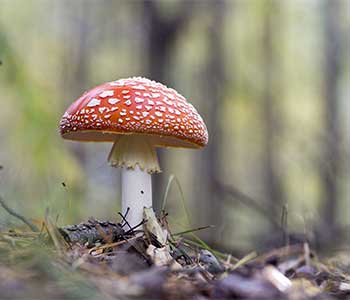
The five principles of soil health
The Nuremberg wine merchant and trained chemist Martin Kössler has thankfully sent me the essay "The Five Principles of Soil Health" by the Australian soil ecologist Christine Jones. In his opinion, everyone involved in agricultural products should have read it. I can only agree with this, which is why I have summarised the paper here. The nine-page original is recommended.
October 2021
Source: Jones, Christine. Five Principles of Soil Health. Originally appeared in the October 2017 issue of Acres U.S.A. magazine.
Quicktranslation with DeepL
Over the last 150 years, the world's best topsoils have lost between 30 and 75% of their carbon, and with it fertility and profitability. The quality of about 30% of the world's arable land has deteriorated so much in the last 40 years that it has had to be abandoned. Against the backdrop of a growing world population, the restoration of these topsoils is more urgent than ever, according to Jones.
Soil dysfunction also affects human and animal health. Over the past 70 years, the nutrient content of virtually all foods has dropped by between 10 and 100%. Today, one would have to eat twice as much meat, three times as much fruit and up to five times as many vegetables to take in the same amounts of minerals and trace elements as in 1940. Figures for vegetables and meat on page 1 in the paper. The decrease in mineral content in meat and dairy products reflects the fact that the content in the animals' plant feed has decreased.
The function of the soil ecosystem is thus determined by the presence, diversity and rate of photosynthesis of actively growing green plants - as well as by the presence or absence of chemical toxins.
On the principles of soil health
- The power of photosynthesis. A process that takes place in the chloroplasts of green plant leaves. Put simply, it removes carbon dioxide from the atmosphere and replaces it with life-giving oxygen. This helps the microbial communities in the soil to regenerate the topsoil, restore the water balance in agriculture, improve the nutrient density of food and ultimately the profitability of agriculture. Without photosynthesis, therefore, there is no topsoil. The power of photosynthesis is determined by photosynthetic capacity (= the amount of light captured by green leaves in a given area). Improved by undersowing, strategic grazing and biodiversity in general, among other things), photosynthetic rate (= the rate at which plants are able to convert light energy into sugars. Plants with a high rate have high sugar and mineral content, are less susceptible to pests and diseases, and improve weight gain of grazing animals), grazing management (grazing less than 50% of available leafy greens is likely to be crucial, see p. 4 in the paper), cropping (more advanced machinery and the increasing use of highly efficient pesticides have reduced the photosynthetic capacity of vast areas of bare land and released carbon dioxide. Intercropping is rapidly contributing to improvement).
- Microbes are important! 95 % of life on land takes place in the soil, and most of the energy needed for this is supplied by plants. The secretions (exudates) from living roots are the most carbon-rich sources. Strong root systems and mycorrhizae (underground fungi in symbiosis with plant roots) are essential for crops to accumulate water, minerals and trace elements and subsequently for resistance to diseases, pests and climatic extremes. Soil life also creates the necessary structure of the soil to absorb moisture and retain it in the soil.
- Diversity is not dispensable. Each plant secretes its own mixture of sugars, enzymes, phenols, amino acids and many other substances, many of which act as signals for microorganisms. The greater the diversity of plants [and also of animals and insects], the greater the diversity of microbes and the more robust the soil ecosystem becomes. Monocultures need external support (e.g. through -cides), which leads to the fertility problems described above. In innovative agriculture, on the other hand, crops are mixed, and trees are also increasingly placed in the fields. Plants in community support each other, carbon, water and nutrients are transported and exchanged via huge mycorrhiza networks.
- Reduction of the use of chemicals. Mineral cycling improves significantly when soils are alive. Mycorrhizae can supply up to 90% of the nitrogen and phosphorus needs of plants. This requires companion plants, crop rotation, cover crops and the reduction of chemicals and synthetic fertilisers. It should be known, moreover, that in the year of application only 10 to 15 % of the phosphorus contained in a fertiliser is taken up by arable and pasture plants. The rest remains in the soil, where it accumulates massively over the years. Microbes and mycorrhizae, on the other hand, help to access the available phosphorus.
- Avoidance of aggressive tillage. Repeated and/or aggressive tillage increases susceptibility to erosion, reduces carbon and nitrogen content, mineralises soil nutrients more rapidly and is highly detrimental to beneficial soil-improving microbes such as mycorrhizae and invertebrates such as earthworms.
If these principles of soil health heal soils and agriculture alike, soils and plants become more resilient to negative climate change - and a significant contribution is made to climate protection.




